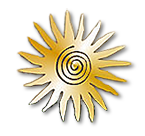You are here
News Feeds
Environmental impact of unexploded ordnance in the Baltic Sea
The south-western Baltic Sea has about 3,000 kilograms of dissolved toxic chemicals released from unexploded ordnance, according to a new study. The substances were detected in almost all water samples taken in 2017 and 2018, with particularly high concentrations in the Bights of Kiel and L beck. The levels are still below thresholds for health risk, but highlight the urgent need for munitions clearance to minimize long-term risks.
Categories: Science
AI generates playful, human-like games
A team of scientists has now created a computer model that can represent and generate human-like goals by learning from how people create games. The work could lead to AI systems that better understand human intentions and more faithfully model and align with our goals. It may also lead to AI systems that can help us design more human-like games.
Categories: Science
Time interfaces: The gateway to four-dimensional quantum optics
A new study explores the behavior of photons, the elementary particles of light, as they encounter boundaries where material properties change rapidly over time. This research uncovers remarkable quantum optical phenomena which may enhance quantum technology and paves the road for an exciting nascent field: four-dimensional quantum optics.
Categories: Science
Protein design: Flexible components allow new architectures
Biophysicists have elucidated why unexpected structures can sometimes arise during protein design.
Categories: Science
Novel photochromic glass can store rewritable 3D patterns long term
For decades researchers have been exploring how to store data in glass because of its potential to hold information for a long time -- eons -- without applying power. A special type of glass that changes color in different wavelengths of light, called photochromic glass, holds promise for stable, reusable data storage. Now, researchers have developed a doped photochromic glass that has the potential to store rewritable data indefinitely.
Categories: Science
Some fuel lodges in the inner walls of fusion vessels: Researchers now have a better idea of how much
New research offers insights that could help reduce the amount of radioactive tritium embedded in the walls of fusion vessels to a minimum.
Categories: Science
Extreme heat may speed up biological ageing in older people
Spending more days in extreme heat seems to be linked to markers of increased biological ageing in people aged 56 and over, suggesting that it could raise the risk of age-related diseases
Categories: Science
Struggling with envy? Here are some science-backed ways to help
A reader dealing with jealousy of a friend is given a host of scientifically sourced ways to help from our advice columnist David Robson
Categories: Science
Sci-fi thriller Dissolution smartly interweaves time travel and memory
In his new novel Dissolution, Nicholas Binge plays with time travel and memory to craft a thriller reminiscent of Memento and Inception. It is well-deserving of its upcoming big screen treatment, says Emily H. Wilson
Categories: Science
Incredible close-up images of insects scoop photo contest honours
A “smiling” damselfly and shimmering beetle captivated judges in the Royal Entomological Society’s 2024 Photography Competition
Categories: Science
From doomy prophecies to epic dystopias, we are suckers for end times
Despite facing real existential threats like climate change, we remain too fascinated by the end of the world, argues a new book
Categories: Science
A spat over sand eels threatens puffins and other iconic seabirds
Overfishing of small fish has led to population declines in the birds that feed on them. Now the UK government's attempts to protect this crucial resource faces a serious challenge
Categories: Science
How a theory about maleness could explain the state of the world
Feedback is intrigued by a theory arguing that when maleness is threatened, men overcompensate with increased support for war and homophobia – and interest in SUVs
Categories: Science
Why humanoid robots are missing the point
Why pour so much technological effort into developing a human-shaped robot when it could be any shape at all, asks Leah Crane
Categories: Science
Gripping account of how plants and animals shaped each other
Palaeontologist Riley Black is back with a thrilling guide to how animals and plants co-evolved over millennia
Categories: Science
How to think about the most contentious ideas in science
When faced with real-life controversy over the thorniest of research topics, we can seek guidance from fiction
Categories: Science
AI accelerates discovery of neurodevelopmental disorder-associated genes
Researchers have developed an artificial intelligence (AI) approach that accelerates the identification of genes that contribute to neurodevelopmental conditions such as autism spectrum disorder, epilepsy and developmental delay. This new powerful computational tool can help fully characterize the genetic landscape of neurodevelopmental disorders, which is key to making accurate molecular diagnosis, elucidating disease mechanism and developing targeted therapies.
Categories: Science
Multiplexing entanglement in a quantum network
Researchers use rare-earth ions to achieve the first-ever demonstration of entanglement multiplexing between individual memory qubits in a quantum network.
Categories: Science
Multiplexing entanglement in a quantum network
Researchers use rare-earth ions to achieve the first-ever demonstration of entanglement multiplexing between individual memory qubits in a quantum network.
Categories: Science
Sacrificial scaffolding helps new hydrogels heal quickly
Researchers have developed a hydrogel that heals and strengthens itself as it is overloaded and damaged. The proof-of-concept demonstration could lead to improved performance for situations where soft but durable materials are required, such as load-bearing connections and joints within machines, robots and even people.
Categories: Science
